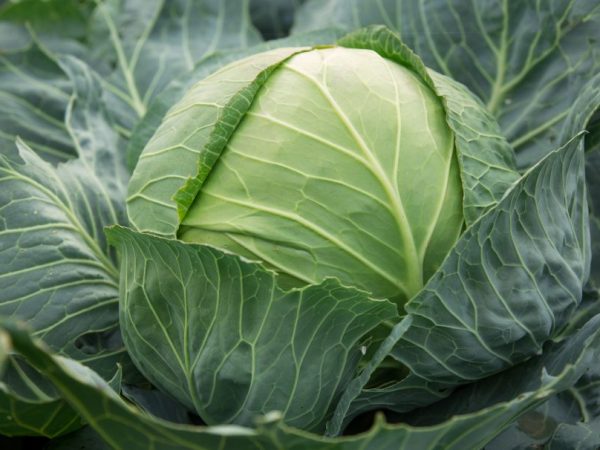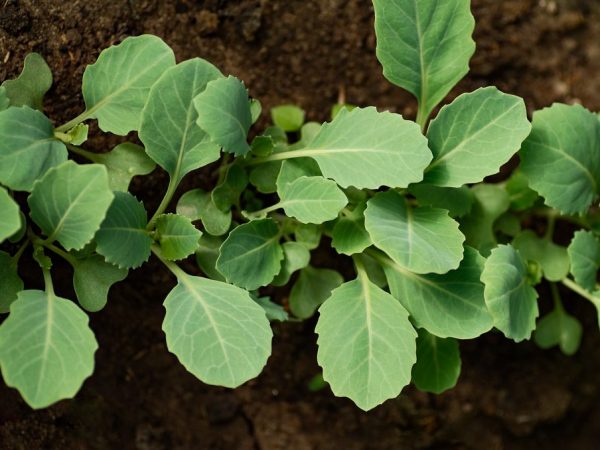Description of cabbage variety Sugarloaf
White cabbage Sugarloaf appeared in 2008, this variety was bred by Russian breeders in Moscow, by the Sedek seed company. Today it is widely used for commercial production and home use. We will consider a detailed description of the variety in the article.

Description of cabbage variety Sugarloaf
Characteristic
Cabbage variety Sugarloaf - late. Ripening period - 140 - 150 days (time from emergence of seedlings to the onset of technical ripeness).
The yield is 398 - 550 kg / ha, which is higher than the average rate of marketable yield. Possesses excellent taste. Shelf life - up to one year. High content of vitamins and minerals. It is resistant to cracking and diseases: keela, fusarium, bacteriosis. Suitable for long journeys.
Description
Cabbage has a medium-sized, powerful head. The height of the bushes is about 40 cm. The leaves are round, large, slightly bubbly, light green in color with a gray tint and a waxy coating; the edges of the leaves are wavy. Leaf rosette - spreading, raised, 80 cm in diameter.
Characteristics of a head of cabbage:
- shape - rounded;
- the surface is smooth;
- average weight - from 2.5 to 3.5 kg;
- density - high ;;
- internal stump - medium;
- outer stump - short;
- the internal structure is homogeneous.
Recommended to be consumed one month after harvest. Since at first the vegetable tastes a little bitter. When the head of cabbage is laid back, it takes on a sweet taste. During storage, the fruits do not lose their properties, but on the contrary - the taste only intensifies.
Growing technology
Depending on the climatic conditions of the region and for higher productivity, the seedling growing method is most often used.
Growing seedlings
Sowing seeds for seedlings of late-ripening varieties of white cabbage begins from April 15. Pay attention to the packaging with seeds, if the seeds have not been processed, then they should be soaked for 12 hours in a solution of potassium humate (1 g) and water (1 l). After processing, the seeds are washed and left for a day in a cool place.
You can buy soil for sowing seeds at the store or make your own. Soil composition: mix three equal parts of turf, peat, and humus, add 5 - 7% sand.
Planting seeds is carried out in containers that will stand in the house on the windowsill, or on a bed under a special cover made of film.

Seedlings need to be fertilized
For good plant development, the soil must be warmed up to a temperature of 17 ° C. The layout of future seedlings is 5x5 cm, and the depth is 1.5 cm. Before sowing, the wells should be watered, after - watering takes place as moisture evaporates, the soil should not be allowed to dry out.
During the ripening of the seedlings, two mandatory feeding are carried out:
- Two weeks after plant sprouting, the soil is watered with a fertilizer based on nitrogen, phosphorus and potassium (N, P, K).
- 1-2 weeks before planting in open ground, watered with a solution of water (1 bucket), urea (15 g) and potassium sulfate (15 g). Use 150 ml of solution per plant.
Transplanting seedlings into open ground
At the end of May, the seedlings should reach 15 cm, the number of leaves should be at least 4 pcs. During this period, cabbage must be transplanted into open ground.
It is not recommended to plant cruciferous plants in the same place where they grew before, as the soil has not yet recovered from previous plants. The recovery time lasts at least 3 years. Good precursors for planting cruciferous crops are legumes, pumpkin crops, onions, herbs, and potatoes. Saplings are planted on the sunny side of the site.
Wells for seedlings are made according to the scheme - 60x60 cm, depth - 2 cm.Urea (1 tbsp. L.) And superphosphate (2 tbsp. L.) Are introduced into each depression. Plants should be deepened to the first leaf. After planting, the seedlings need to be watered - 0.5 liters each. water for each bush.
Care
The Sugarloaf variety does not require special care, during the ripening period it is enough:
- weed cleaning;
- loosening before watering;
- hilling after watering.
It is necessary to water the plants as the soil dries up; abundant watering can cause rotting of the root system. During head formation, water consumption increases.
Harvesting
Harvesting begins in September. Vegetable crops can be stored in the field until the onset of frost, tolerates frosts down to -6 ° C. A month before the start of harvesting, to prevent cracking of the fruit, watering is stopped. Store in a dry place for about 12 months at 0 ° C.
Pests and diseases
Sugarloaf is immune to diseases such as keela, fusarium, bacteriosis. Most often, plants can be damaged by black leg, downy mildew and insects: cruciferous flea, cabbage aphid.
Treatment:
- black leg - Trichodermin and Previkur drugs will help;
- downy mildew - spray with copper sulfate, cuproxate, copper chloroxide, pollinate with ground sulfur;
- cruciferous flea - spray with an ash solution (250 g of ash for 1 bucket of water), pollinate with grated ash, use Pochin and Decis preparations;
- cabbage aphid - seedlings should be placed near dill and parsley, such plants are able to attract hoverflies and ladybirds that feed on aphids.
Conclusion
White cabbage Sugarloaf is a late variety. It is a versatile product to consume. It has a high content of useful elements. Does not require special care in growing. Has a strong immunity to bacteriosis, fusarium and carina. It does not lose its taste during long-term storage, on the contrary, it becomes sweet and juicy. Subject to the storage rules, vegetables retain their presentation for 1 year.


